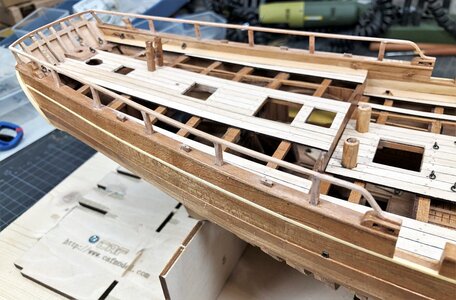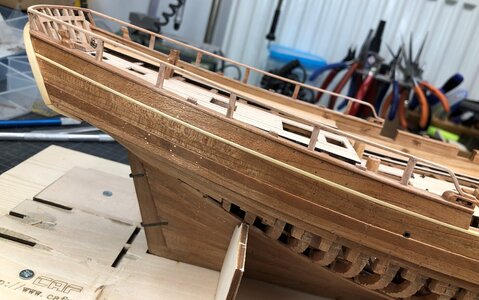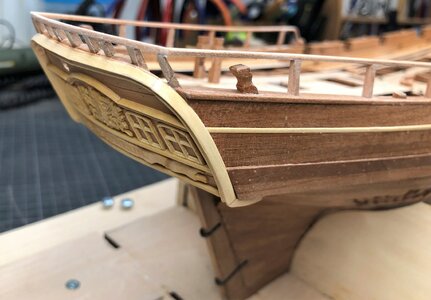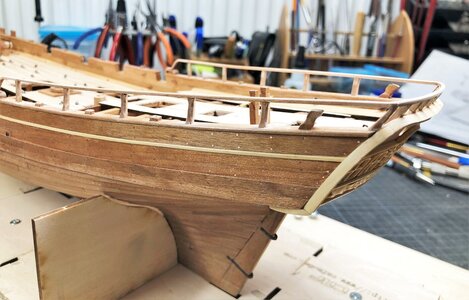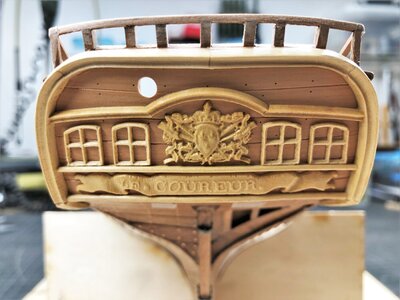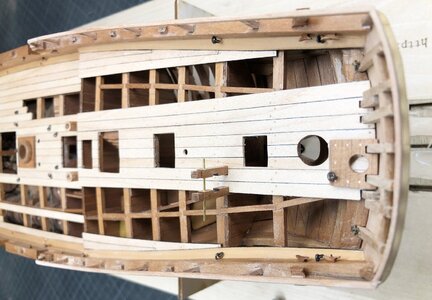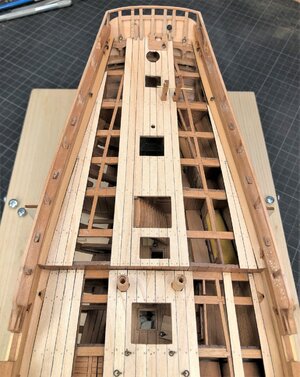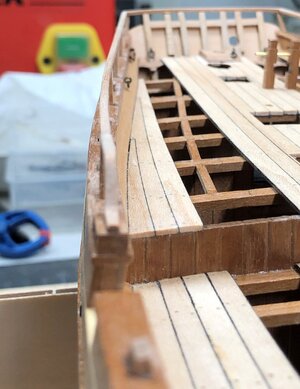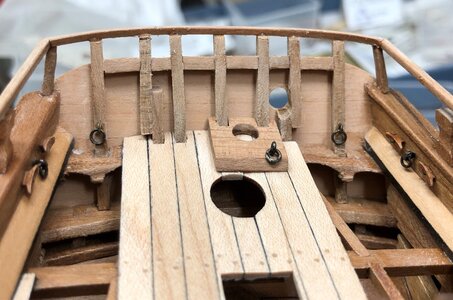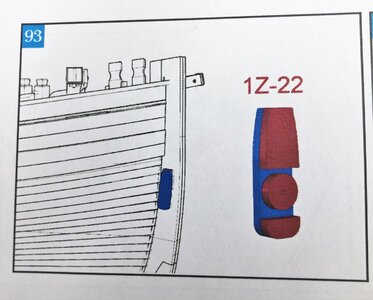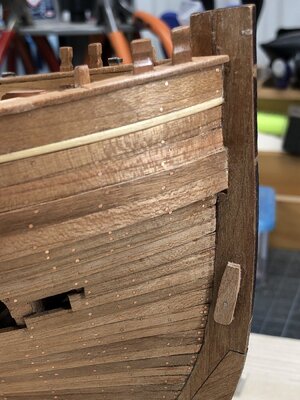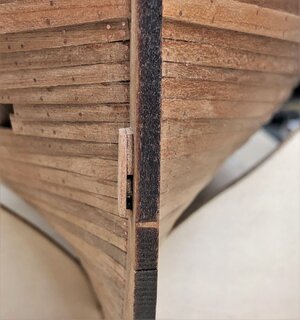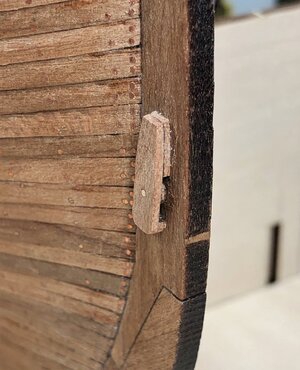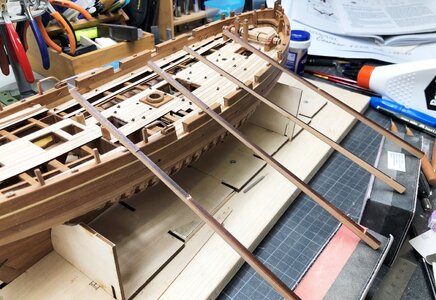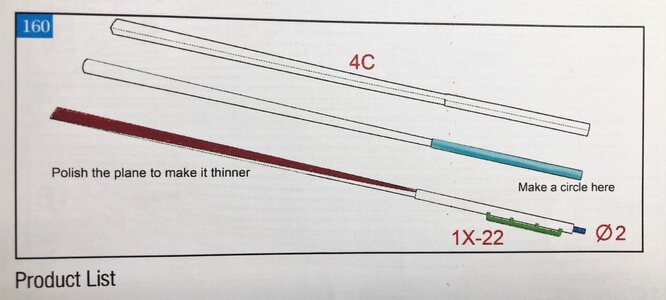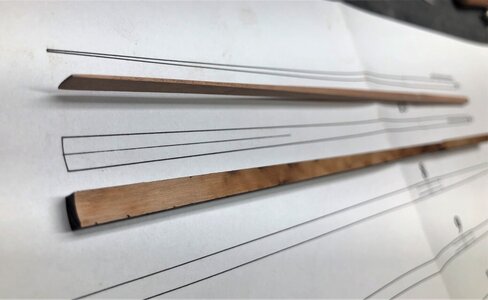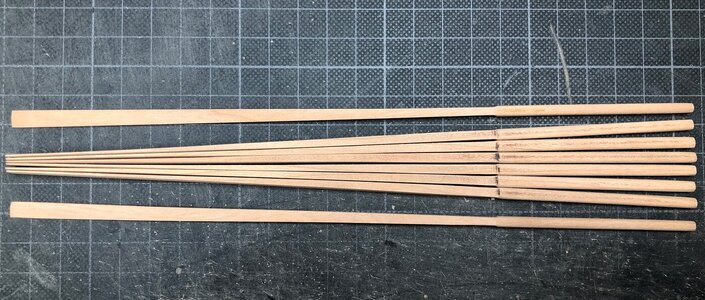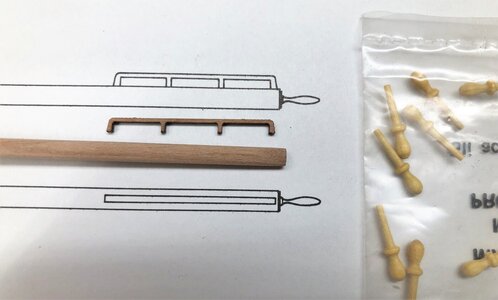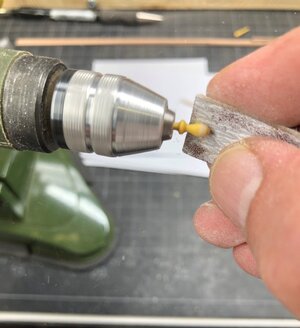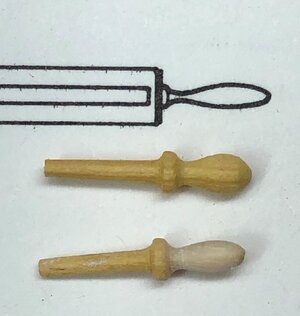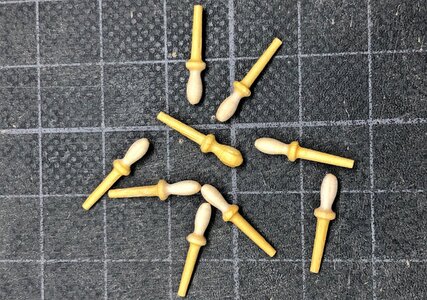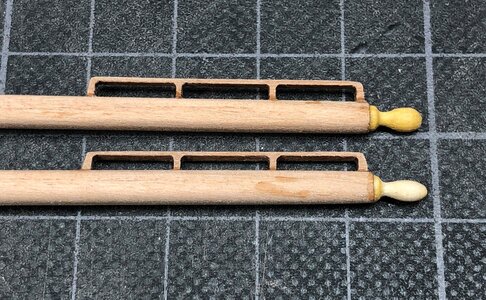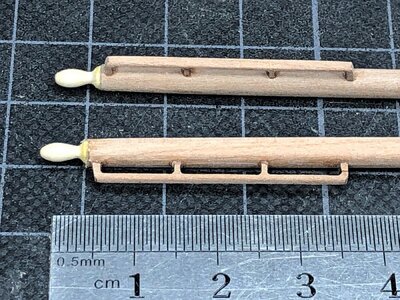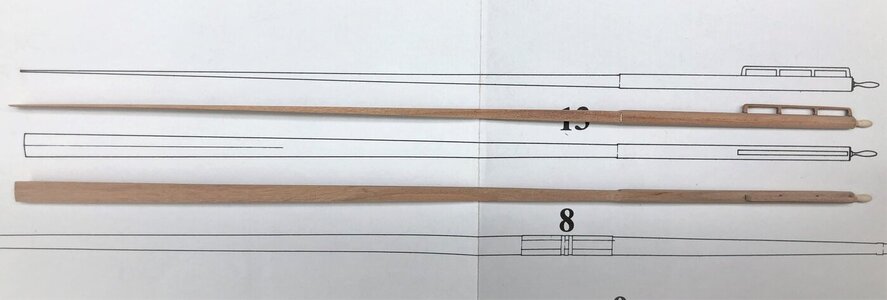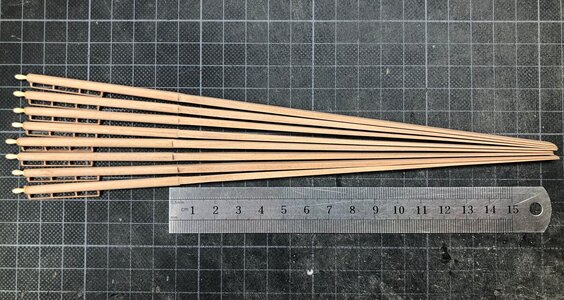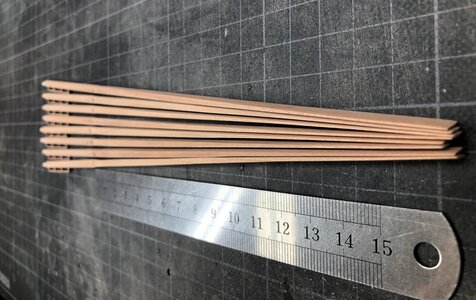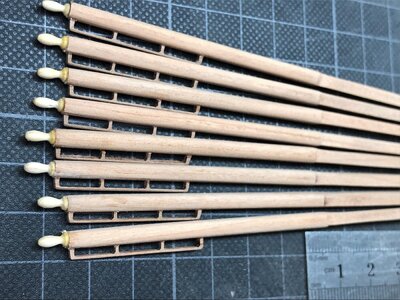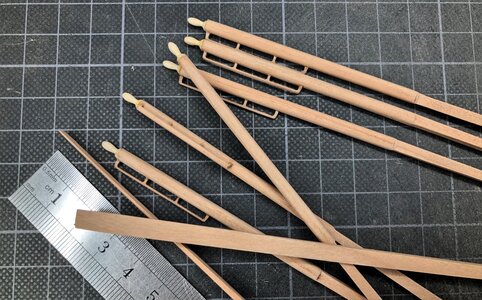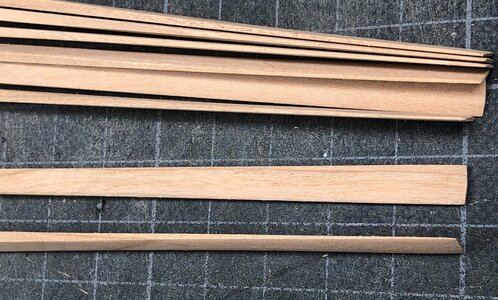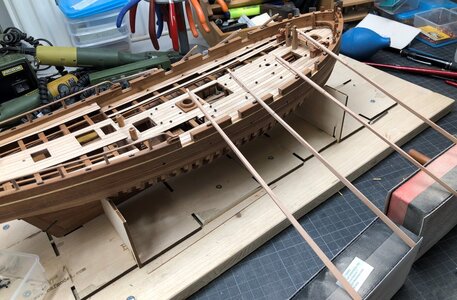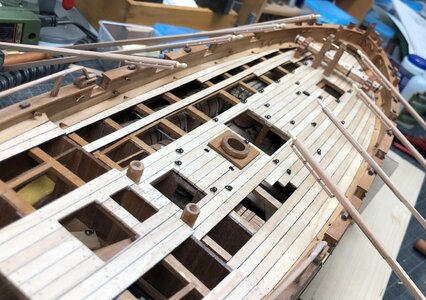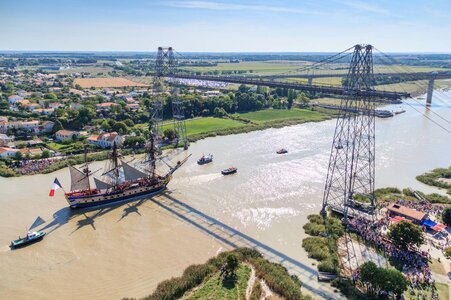The pillars are in place
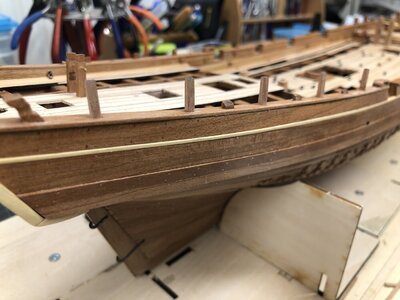
testing the correct height (and alignment) with the horizontal rail
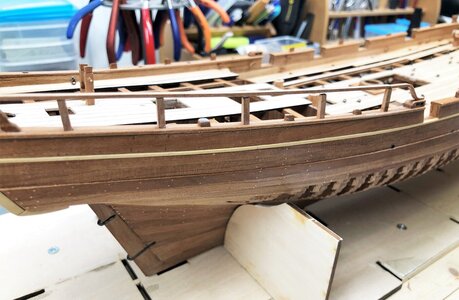
some small adjustments were necessary in order to get a smooth alignment
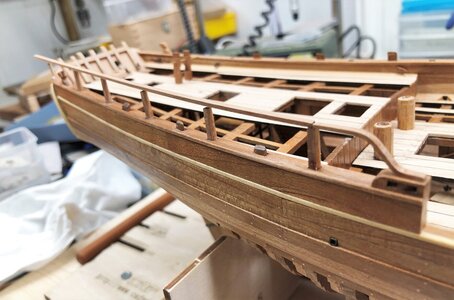
But be aware: Before you fix the rail, please drill the small holes for the oars - the basis for the oars are exactly in the same fall line and under the rails. If the rail is fixed you can not drill any more
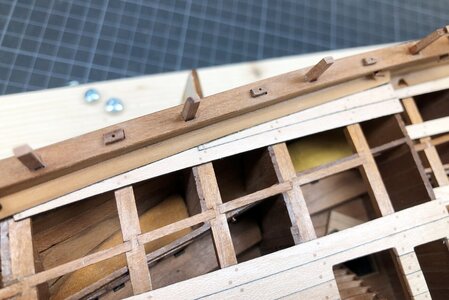
I made also the other one and fixed the height and drilled all holes
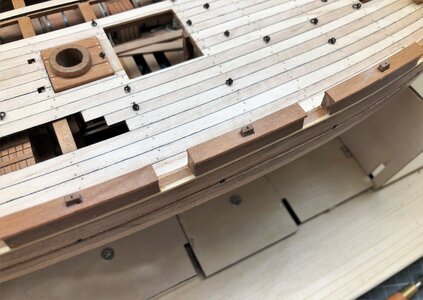
just for fun the "oars" on some locations midship
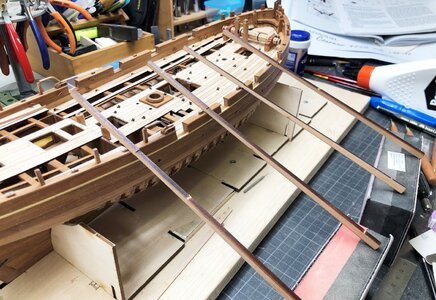
top view with all drilled holes for the oars and prepared pillars for the rail
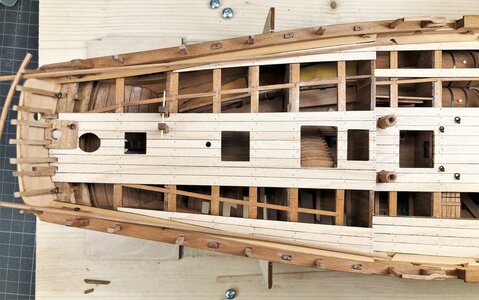

testing the correct height (and alignment) with the horizontal rail

some small adjustments were necessary in order to get a smooth alignment

But be aware: Before you fix the rail, please drill the small holes for the oars - the basis for the oars are exactly in the same fall line and under the rails. If the rail is fixed you can not drill any more

I made also the other one and fixed the height and drilled all holes

just for fun the "oars" on some locations midship

top view with all drilled holes for the oars and prepared pillars for the rail






